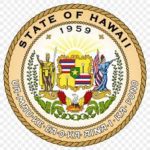Yesterday, Governor Josh Green announced progress on Maui wildfire recovery and response.
The Governor announced plans for a new, temporary campus for King Kamehameha III Elementary School, which was damaged beyond repair, to serve displaced West Maui students and educators. The state will lease privately owned land north of Lāhainā town where the U.S. Army Corps of Engineers will construct modular classrooms and additional buildings.
Governor Green also addressed efforts to transition survivors from hotels to longer-term housing.
In a statement the Governor said, “In terms of housing, we can’t say enough how grateful we are that our hospitality industry, including so many hotels, has extended its aloha to residents who survived the wildfires by immediately providing more suitable accommodations for our Maui families,” the Governor said. “I thank our vacation rentals for housing more than 1,400 displaced residents, in addition to the thousands in hotel rooms and hundreds in HHFDC units. We are beginning the process of transitioning survivors out of hotels and into longer-term housing including additional vacation rental and condo-hotel housing, that will begin to feel at least a little bit more normal for those deeply affected,” Governor Green said.
The Green Administration moved survivors from congregate shelters to non-congregate shelters within two weeks of the disaster. Alongside the State Department of Business, Economic Development, and Tourism (DBEDT), the American Red Cross, Federal Emergency Management Agency (FEMA), and private-sector partners housed nearly 8,000 survivors and hotel employees in more than 2,400 units across some 40 properties. The Hawaiʻi Housing Finance and Development Corporation placed more than 300 families through its Hawaiʻi Fire Relief Housing Program, which has approximately 1,200 property listings. Ongoing discussions with Expedia-VRBO are aimed at adding housing for displaced survivors. FEMA has received 15,931 registrations for services and will support more than 18 months of rental assistance for survivors.
In addition to housing, the state, through the Department of Human Services (DHS), is offering financial assistance to survivors through federally funded programs including the Supplemental Nutrition Assistance Program (SNAP), the Disaster Supplemental Nutrition Assistance Program (D-SNAP) and Temporary Assistance for Needy Families (TANF).
The American Red Cross has been on the ground from the beginning stages of the disaster, caring for survivors first in mass shelters and now, in hotels and other locations.
“Our primary focus at this time is caring for about 78 percent of the pre-disaster population of Lāhainā — who are staying in dozens of non-congregate shelters (NCS),” said Red Cross Deputy Coordinating Officer Adam Runkle in a press release. “All survivors in our NCS care, who resided on Maui and whose primary home was made uninhabitable, will continue to receive shelter and will not be impacted by the end of the Safe Harbor period on September 29.”
By September 29, the Red Cross will have eligibility data needed to help find solutions for all survivors in its care. The October 8 reopening of tourism also will have no effect on Red Cross NCS sheltering services, Runkle said
